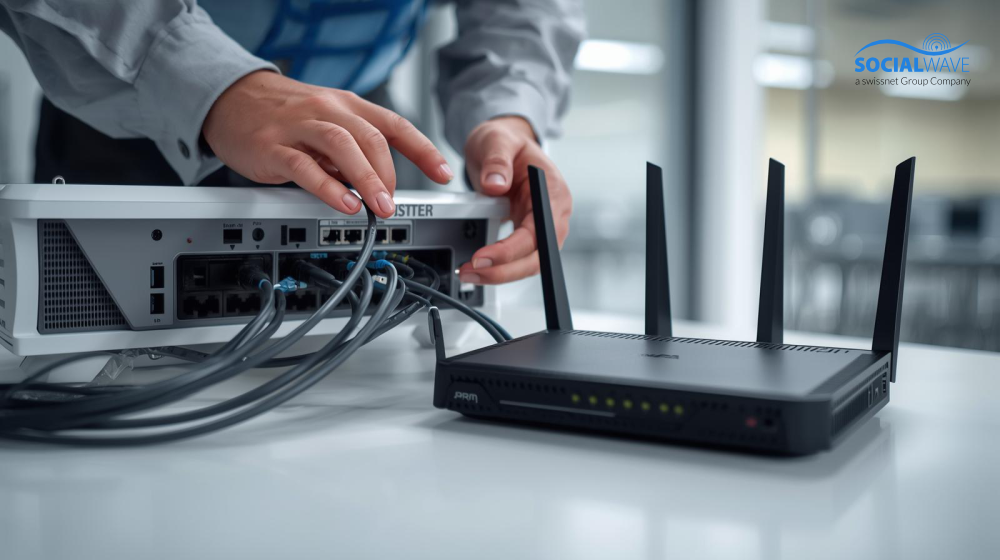WiFi 6 — That's what the new WLAN standard can do

In 1997, the technology that is found in almost every household today was presented for the first time: WLAN, also known as WiFi. This wireless network technology has gone through various phases of development since its inception in the late 90s. With the latest version, WiFi 6, not only has naming been simplified, but many other benefits have also been introduced, which we would like to explain below. The previous current standard had the complex name “IEEE 802.11 ac”, also known as WLAN AC.
From WiFi 5 to WiFi 6
WiFi 6 not only offers a faster connection than WiFi 5, but also many other improvements. The most significant change concerns the way routers transfer data: WiFi 6 uses a new technology called OFDMA (Orthogonal Frequency Division Multiple Access), which makes it possible to transfer data to different devices at the same time. This means that video conferences and streaming, for example, no longer interfere with each other. OFDMA also allows more devices to be connected to the router at the same time. The maximum connection speed has also increased, from 6.9 Gbps to 9.6 Gbps.
More improvements with WiFi 6
WiFi 6 not only brings better multitasking and faster transfer rates, but also many other new features. Compared to WiFi 5, where routers sent signals in all directions and as a result there was signal dispersion, routers with the new standard can precisely locate the connected devices and transmit the data in a targeted manner. A lower incidence of interference from other networks is another advantage. WLAN networks can now be identified better and are therefore less likely to interfere with each other. This is particularly advantageous in apartment buildings. In addition, the power consumption of routers and devices has been optimized. The so-called “Target Wake Time” allows devices to use their WLAN standby times more efficiently, which results in lower power consumption. Finally, the security of the WLAN network was also improved with the new standard. WPA3, the successor to WPA2, offers better protection against attacks by securing weak passwords more effectively.

Who can use WiFi 6?
WiFi 6 was recently introduced, so many devices are not yet equipped with this new standard. However, WiFi 6 is already widely used, particularly in the smartphone market. For example, the iPhone 11 and Samsung Galaxy S10 support the WiFi 6 standard. Companies such as OnePlus, Huawei, and Motorola also offer WiFi 6-enabled devices. PC manufacturers such as Asus, HP and Dell have also already integrated WiFi 6, and the PlayStation 5 is the first console to use the new WLAN standard. Even if your device is not yet WiFi 6-enabled, you can still upgrade your home WiFi to WiFi 6. Because in addition to the increased speed, which you may not be able to use at the moment, WPA3 and TWT already offer improved security and efficiency for your devices.
WiFi 6 in use at Socialwave
With Socialwave, you can use the new standard for yourself right from the start. All our routers and access points are equipped with WiFi 6 and receive the latest software from us permanently and automatically. Thanks to these improvements, especially in the area of security, combined with our firewall, all data in your company is absolutely secure and you can concentrate completely on your day-to-day business.
conclusion
WiFi 6 has brought many improvements, including higher security, faster connections and less vulnerability to faults. This makes the current standard interesting for both private households and companies, which is why the new technologies at Socialwave are always directly included. That way, you can be sure that you always have the best performance and security available on your network.








.svg)

.svg)
.svg)



